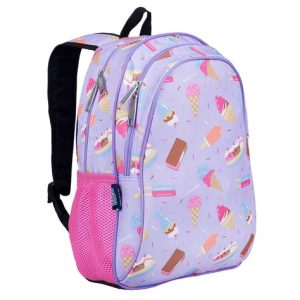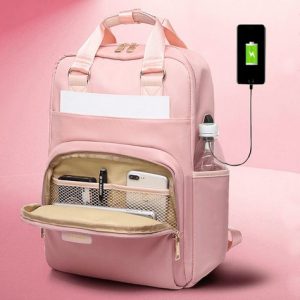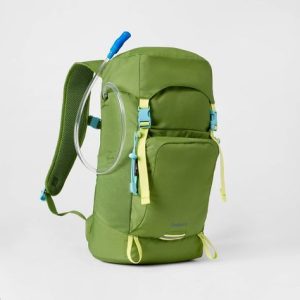May 23, 2024
Keep Your Gear Dry: DIY Backpack Waterproofing Solutions
How to make a backpack waterproof? A backpack is a trusty companion for adventures big and small. But unexpected rain can dampen your spirits – and your gear! This guide explores various methods to make your backpack more water-resistant, so you can face the elements with confidence.
Understanding Backpack Materials
Backpacks are made from different materials, each with varying water resistance:
Polyester:
A common and affordable choice, polyester offers decent water resistance, especially when treated with a water repellent.
Nylon:
Similar to polyester, nylon offers good water resistance and dries quickly.
Canvas:
A classic and sturdy material, canvas can be water-resistant with a wax treatment. However, it can get heavy when wet.
Dyneema® Composite Fabric (DCF):
This ultralight, high-performance material offers exceptional water resistance. However, DCF backpacks tend to be more expensive.
Remember: Even water-resistant materials can eventually become saturated.
Simple Waterproofing Techniques
Here are some easy methods to enhance your backpack’s water resistance:
-
Fabric Protector Spray: Apply a fabric protector spray designed for backpacks. Follow the instructions carefully, paying attention to ventilation during application. These sprays can be found at most outdoor gear stores.
-
Seam Sealing: Water can seep in through seams. Use a seam sealer specifically designed for tents or backpacks. Apply according to the product instructions, which typically involve using a small brush to coat the seams.
Important Note: Always test any waterproofing product on a small, inconspicuous area of your backpack first to ensure it doesn’t cause discoloration.
Using a Backpack Rain Cover
A backpack rain cover is a simple and effective way to shield your backpack from the elements. Rain covers are typically made from lightweight, waterproof materials like nylon or polyester.
Here are some benefits of using a backpack rain cover:
- Quick and easy to use: Simply slip the rain cover over your backpack and secure it with straps or toggles.
- Protects from dust and dirt: Rain covers can also shield your backpack from dust and dirt on the trail.
- Variety of sizes: Rain covers come in various sizes to fit most backpacks.
DIY Rain Cover (Optional)
If you’re feeling creative, you can try making your own backpack rain cover from a tarp or heavy-duty plastic sheeting. Here’s a basic approach:
- Choose a tarp or plastic sheeting slightly larger than your backpack.
- Cut a piece that can drape over your backpack with some extra material on the sides.
- Create holes or loops at the corners for an elastic cord or cord lock closure.
- Thread the elastic cord through the holes and adjust the tension to secure the cover around your backpack.
Remember: A DIY rain cover may not be as durable or effective as a commercially available option.
Packing for Wet Weather
Even with a water-resistant backpack, it’s wise to pack strategically for wet weather:
- Use waterproof gear bags: Inner gear bags can add an extra layer of protection for your belongings.
- Pack important items in waterproof pouches: Electronics, wallets, and important documents can be placed in waterproof pouches for extra security.
- Layer your clothing: Wearing layers allows you to adjust to changing weather conditions.
By employing a combination of these methods – waterproofing your backpack, using a rain cover, and packing strategically – you can keep your gear dry and your adventures on track, rain or shine.

Level Up Your Backpack Protection: Advanced Waterproofing Techniques
For those seeking extra protection against the elements, here are some advanced waterproofing methods:
-
Seam Sealing with Seam Sealer Tape: This method offers a more permanent solution compared to seam sealer liquids. Seam sealer tape is a waterproof adhesive tape applied along the seams for enhanced water resistance.
-
Silicone Spray: Silicone spray can provide additional water repellency, especially for canvas or nylon backpacks. However, it’s important to choose a breathable silicone spray to prevent moisture build-up within the backpack.
Important Note: Applying seam sealer tape and silicone spray can be more involved than using liquids. If you’re not comfortable with these methods, consider seeking help from a gear repair shop or an experienced outdoors person.
Utilizing a Backpack Liner
A backpack liner is a large, waterproof bag that fits inside your backpack. Here are some benefits of using a backpack liner:
- Ultimate protection: Liners offer the most waterproof protection for your gear.
- Versatility: Liners can be used in various backpacks and come in different sizes.
- Double duty: Some liners can be used as standalone dry bags during hikes or camping trips.
Choosing the Right Backpack Liner
When selecting a backpack liner, consider these factors:
- Size: The liner should be slightly smaller than your backpack’s interior dimensions.
- Material: Common liner materials include silnylon (lightweight and waterproof) and PVC (heavy-duty and waterproof).
- Closure type: Choose a liner with a closure system that seals tight, like a roll-top closure.
Caring for Your Water-Resistant Backpack
Proper care extends the lifespan of your water-resistant backpack:
- Cleaning: Clean your backpack with a damp cloth and gentle soap after each adventure.
- Drying: Allow your backpack to air dry completely before storing it. Avoid direct sunlight or high heat sources during drying.
- Re-application: Over time, water-repellent sprays can wear off. Re-apply the spray according to the product instructions to maintain water resistance.
Travel Smart: Packing for Wet Weather
Even with a water-resistant backpack, it’s wise to pack strategically for wet weather:
- Gear bags: Inner gear bags can add an extra layer of protection for your belongings. Choose from various sizes and materials to fit your needs.
- Waterproof pouches: Electronics, wallets, and important documents can be placed in waterproof pouches for extra security. Look for pouches with a secure closure like a dry-seal or zipper.
- Layering: Wearing layers allows you to adjust to changing weather conditions. Pack a base layer, an insulating layer, and a waterproof outer shell.
By packing smart, you can minimize the risk of your belongings getting wet, even if your backpack gets damp.
Conclusion
While waterproofing your backpack can help, it’s important to remember that no backpack is completely waterproof. By following these packing tips, you can keep your gear dry and your adventures on track, rain or shine.
By following these tips and choosing the methods that best suit your needs and comfort level, you can effectively waterproof your backpack and keep your gear protected from the elements. Remember, a well-maintained backpack will be your trusty companion for many adventures to come!



